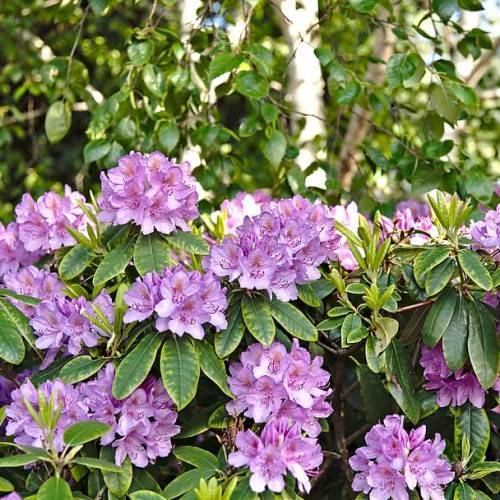
big-leaved rhododendron
Rhododendron 'Dark Sister'
Cycle:
Perennial
Watering:
Average
Hardiness Zone:
5 - 8
Flowers:
Flowers In Spring
Sun:
Full sun,part shade
Leaf:
Yes
Growth Rate:
Moderate
Maintenance:
Moderate
Poisonous To Pets:
Yes
Care Level:
Medium
watering
It is important to provide a big-leaved rhododendron (Rhododendron 'Dark Sister') with the correct amount of water for optimal growth. The amount of water needed will depend in part on the soil type, temperature, and humidity levels. Generally, big-leaved rhododendrons need to be watered deeply once or twice a week during the growing season, which is usually late spring to early summer. In hot and dry weather, more frequent watering may be necessary. To avoid root rot and other types of damage, it's best to allow the top inch of soil to dry between waterings. During the winter months, big-leaved rhododendrons need little to no water.
sunlight
Big-leaved rhododendron (Rhododendron 'Dark Sister') grows best in part shade to partial sunlight. This means the plant should receive 2 to 4 hours of direct sunlight each day, preferably in the morning. In regions with severe winters, it may be necessary to protect the plants from severe cold. For best growth and flowering, stand the rhododendron in a location that receives dappled sunlight throughout the day. With too much direct sun, the delicate foliage will burn.
pruning
Big-leaved rhododendron (Rhododendron 'Dark Sister') should be pruned annually, usually starting in late spring or early summer. Pruning can reduce the size of the bush and encourage new growth. To prune, start by removing dead, bruised, diseased, or damaged stems. Next, remove any crossed branches with sharp, clean pruners. Then reduce the size of the plant by removing some older stems. This will help the plant maintain an even shape. Finally, remove any branches that are growing away from the central leader or are growing towards the center of the plant. Pruning this way will help encourage stronger and more robust growth in the future.
